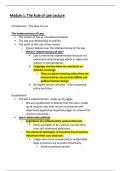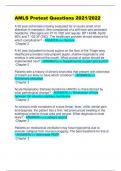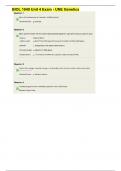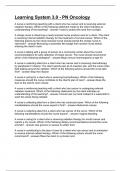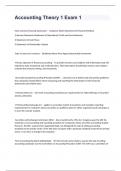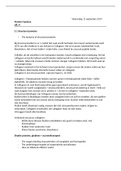STIM1 Controls Neuronal Ca2+ Signaling, mGluR1-Dependent Synaptic Transmission, and
Cerebellar Motor Behavior
Background
The Metabotropic Glutamate Receptor 1 (mGLUR1) activation pathway in Purkinje Neurons (PNs) has
been shown to be crucial in motor learning and function in mammals. mGLUR1 activation by glutamate
binding leads to two intracellular signaling pathways, both of which are dependent on the activation of
Gq/11. In the first pathway, PLCβ is activated, resulting in PIP2 being turned into IP3 and DAG. IP3 then
binds to the IP3 receptor on the Endoplasmic Reticulum (ER) allowing for ER stores to deplete. The
second pathway, which is aimed to refill ER stores, involves TRPC3 mediated Ca 2+ entry from the
extracellular fluid into the cytosol, which can then be subsequently pumped into the ER using SERCA.
However, at the time of this experiment, scientists did not know the identity of the protein that linked G q/11
activation to TRPC3 Ca2+ entry. Previous research indicated that in non-excitable cells, a protein called
STIM1 controls TRPC3 Ca2+ entry while other papers showed that STIM1 was found on the ER
membrane of PNs. Armed with this knowledge, scientists hypothesized that STIM1 was the protein that
connected Gq/11 activation with TRPC3 Ca2+ entry. More specifically, they hypothesized that STIM1 plays
a critical role in the activated mGLUR1 signaling cascade and is also important in refilling ER stores in
PN.
This paper had 4 main objectives: (1) to examine the role of STIM1 in motor learning and
function; (2) to examine the role of STIM1 in the generation of slow EPSCs and fast EPSCs; (3) to
examine the role of STIM1 in ER store refilling at resting membrane potential (RMP); and (4), to
examine the role of STIM1 in ER store refilling in response to depolarization.
Methods
Generation of STIM1 Knockout Mice
STIM1 knockout (KO) mice were created according to the following protocol: mice that had the Cre
recombinase gene placed under the control of a PN-specific promoter were crossed with mice that had
loxP sites flanking exon 6 of the STIM1 gene. The resulting offspring had Cre expression in their PN as
well as loxP sites in those same cells. This allowed Cre recombinase to target and splice exon 6 in PNs,
resulting in the STIM1 KO in PNs only.
Behavioral Tests: Elevated Beam test
Scientists recorded the number of hind paw slips that were observed as 4 control mice and 4 STIM1 KO
mice traversed across a 1cm thin beam that was 50 centimeters long.
Behavioral Tests: Rotarod Test
Scientists measured the duration that 4 control and 8 STIM1 KO mice remained on an accelerating
rotating rod. Mice were tested twice a day for 4 days consecutively, leading to 8 total sessions.
STIM1’s involvement in Fast and Slow EPSCs
The fluorescent calcium indicator, OGB1, was added into control and STIM1 KO PN, and the baseline
calcium levels were recorded via confocal imaging of OGB1 fluorescence intensity. Next, 10 μM of
CNQX, a competitive antagonist of the AMPA receptor (AMPAR), was added to PNs which caused
partial blocking of AMPAR. Parallel fibers were then stimulated by short high-frequency bursts 5 times at
10 V or 25 V at 200 Hz. The current produced in response to each stimulation condition was measured
using a whole-cell voltage-clamp recording and the amount of intracellular calcium post-stimulation was
obtained from confocal imaging. The intracellular calcium post and pre-stimulation were then compared.
Change in calcium fluorescence and DHPG evoked current recordings at RMP
Cerebellar Motor Behavior
Background
The Metabotropic Glutamate Receptor 1 (mGLUR1) activation pathway in Purkinje Neurons (PNs) has
been shown to be crucial in motor learning and function in mammals. mGLUR1 activation by glutamate
binding leads to two intracellular signaling pathways, both of which are dependent on the activation of
Gq/11. In the first pathway, PLCβ is activated, resulting in PIP2 being turned into IP3 and DAG. IP3 then
binds to the IP3 receptor on the Endoplasmic Reticulum (ER) allowing for ER stores to deplete. The
second pathway, which is aimed to refill ER stores, involves TRPC3 mediated Ca 2+ entry from the
extracellular fluid into the cytosol, which can then be subsequently pumped into the ER using SERCA.
However, at the time of this experiment, scientists did not know the identity of the protein that linked G q/11
activation to TRPC3 Ca2+ entry. Previous research indicated that in non-excitable cells, a protein called
STIM1 controls TRPC3 Ca2+ entry while other papers showed that STIM1 was found on the ER
membrane of PNs. Armed with this knowledge, scientists hypothesized that STIM1 was the protein that
connected Gq/11 activation with TRPC3 Ca2+ entry. More specifically, they hypothesized that STIM1 plays
a critical role in the activated mGLUR1 signaling cascade and is also important in refilling ER stores in
PN.
This paper had 4 main objectives: (1) to examine the role of STIM1 in motor learning and
function; (2) to examine the role of STIM1 in the generation of slow EPSCs and fast EPSCs; (3) to
examine the role of STIM1 in ER store refilling at resting membrane potential (RMP); and (4), to
examine the role of STIM1 in ER store refilling in response to depolarization.
Methods
Generation of STIM1 Knockout Mice
STIM1 knockout (KO) mice were created according to the following protocol: mice that had the Cre
recombinase gene placed under the control of a PN-specific promoter were crossed with mice that had
loxP sites flanking exon 6 of the STIM1 gene. The resulting offspring had Cre expression in their PN as
well as loxP sites in those same cells. This allowed Cre recombinase to target and splice exon 6 in PNs,
resulting in the STIM1 KO in PNs only.
Behavioral Tests: Elevated Beam test
Scientists recorded the number of hind paw slips that were observed as 4 control mice and 4 STIM1 KO
mice traversed across a 1cm thin beam that was 50 centimeters long.
Behavioral Tests: Rotarod Test
Scientists measured the duration that 4 control and 8 STIM1 KO mice remained on an accelerating
rotating rod. Mice were tested twice a day for 4 days consecutively, leading to 8 total sessions.
STIM1’s involvement in Fast and Slow EPSCs
The fluorescent calcium indicator, OGB1, was added into control and STIM1 KO PN, and the baseline
calcium levels were recorded via confocal imaging of OGB1 fluorescence intensity. Next, 10 μM of
CNQX, a competitive antagonist of the AMPA receptor (AMPAR), was added to PNs which caused
partial blocking of AMPAR. Parallel fibers were then stimulated by short high-frequency bursts 5 times at
10 V or 25 V at 200 Hz. The current produced in response to each stimulation condition was measured
using a whole-cell voltage-clamp recording and the amount of intracellular calcium post-stimulation was
obtained from confocal imaging. The intracellular calcium post and pre-stimulation were then compared.
Change in calcium fluorescence and DHPG evoked current recordings at RMP

